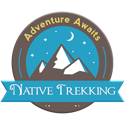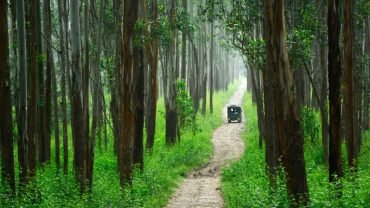Kudremukh, often referred to as the “horse face” due to its distinctive profile, is one of the most sought-after trekking destinations in Karnataka. With its lush green hills, rich biodiversity, and stunning views, the Kudremukh trek offers an unforgettable experience for nature enthusiasts and adventure seekers alike. However, navigating the trails can be challenging, especially for first-time trekkers. This is where a knowledgeable and experienced trek guide becomes invaluable. In this blog, we will explore how to find the best Kudremukh trek guide for a safe and enjoyable journey, ensuring that your adventure is as rewarding as it is secure.
Why You Need a Trek Guide
1. Local Expertise
A seasoned Kudremukh Trek Guide knows the terrain intimately. They can help you navigate the trails, avoid potential hazards, and lead you to the best viewpoints. Their local knowledge about flora, fauna, and geology enhances your trekking experience, providing insights that you might miss otherwise.
2. Safety First
Trekking in unfamiliar areas can pose risks, such as sudden weather changes, tricky terrains, or wildlife encounters. A qualified guide is trained to handle such situations. They are familiar with first aid practices and can provide assistance in emergencies, ensuring that you have a safe journey.
3. Enhanced Experience
With a guide, you can immerse yourself fully in the experience. They can share stories about the local culture, history, and legends of Kudremukh, enriching your understanding and appreciation of the region. Plus, they can help you spot wildlife and unique plant species that you might overlook.
4. Logistical Support
Guides can help manage logistics, from organizing transportation to securing permits, making your trek hassle-free. They can assist in planning the best itinerary based on your preferences and fitness levels.
Explore More: kolukkumalai sunrise trek | Netravathi peak trek | Bandaje falls trek | Anthargange cave trek
How to Find the Best Kudremukh Trek Guide
1. Research Online
The internet is a powerful tool for finding reputable Kudremukh Trek Guide. Start by searching for local trekking companies, adventure clubs, or independent guides who specialize in Kudremukh treks. Look for:
- Websites and Social Media: Most guides and trekking companies will have an online presence. Check their websites, read their blogs, and follow them on social media to get a sense of their expertise and offerings.
- Reviews and Testimonials: Platforms like TripAdvisor, Google Reviews, and Facebook can provide insights from previous trekkers. Look for guides with positive feedback, especially concerning safety, knowledge, and communication.
2. Join Trekking Groups
Consider joining local trekking groups or communities, either online or in-person. These groups often share recommendations for reliable guides and companies. Platforms like Meetup, Facebook Groups, or local adventure clubs can be excellent places to connect with experienced trekkers who can provide insights.
3. Ask for Recommendations
Personal referrals can be one of the most trustworthy ways to find a good guide. If you have friends or family who have trekked in Kudremukh, ask them for recommendations. Their firsthand experiences can guide you toward reliable options.
4. Check Credentials
Once you have a list of potential guides, it’s essential to verify their credentials. Consider the following:
- Experience: Ask about their experience in leading treks, especially in Kudremukh. Guides with several years of experience are generally more adept at handling unexpected challenges.
- Certifications: Check if the guide has any relevant certifications, such as wilderness first aid, mountaineering, or trekking leadership. These qualifications demonstrate their commitment to safety and professionalism.
- Local Knowledge: A good guide should have an extensive understanding of the local terrain, culture, and wildlife. Ask them about their favorite trails, wildlife sightings, and local legends.
5. Evaluate Communication Skills
Effective communication is crucial during a trek. A guide should be able to convey information clearly, listen to your concerns, and adapt to your needs. During your initial interactions, pay attention to their responsiveness and willingness to answer your questions. A guide who takes the time to understand your expectations is likely to provide a better experience.
6. Discuss Itinerary and Cost
Before finalizing a guide, discuss the itinerary in detail. A reputable guide should be flexible and willing to customize the trek based on your preferences, fitness levels, and interests.
Additionally, inquire about costs upfront. This should include:
- Guide Fees: Understand the payment structure—whether it’s a flat fee or per day.
- Inclusions: Clarify what the fee covers. This may include meals, transportation, accommodation, and equipment rentals.
- Cancellation Policy: Ensure you know the cancellation policy in case your plans change.
7. Safety Practices
Inquire about the safety measures the guide has in place. This includes:
- Emergency Protocols: A good guide should have a plan for emergencies, including first-aid provisions, communication methods, and evacuation routes.
- Group Size: Smaller groups tend to be safer and allow for a more personalized experience. Ask about the maximum group size for the trek.
- Equipment: Ensure that the guide provides essential safety equipment, such as first-aid kits, navigation tools, and communication devices.
8. Trial Trek
If possible, consider participating in a shorter trial trek or an introductory hike with the guide. This will give you a sense of their guiding style, knowledge, and how well they communicate and connect with the group.
9. Trust Your Instincts
Ultimately, trust your instincts when choosing a guide. If something feels off during your interactions, it’s okay to keep searching. A good rapport with your guide can significantly enhance your trekking experience.
Preparing for Your Trek
Once you’ve selected a guide, there are several preparations to ensure a successful trek:
1. Physical Fitness
Kudremukh is a moderately challenging trek. Ensure you’re physically prepared by engaging in regular exercise, such as hiking, walking, or strength training. This will help you build stamina and make the trek more enjoyable.
2. Packing Essentials
Work with your guide to prepare a packing list that includes:
- Clothing: Dress in layers to accommodate changing weather conditions. Moisture-wicking fabrics are ideal.
- Footwear: Invest in good trekking shoes with proper grip and ankle support.
- Backpack: A lightweight backpack is essential for carrying water, snacks, and personal items.
- Hydration: Stay hydrated by carrying enough water for the trek. Consider a hydration pack or water bottles.
- Snacks: Energy-rich snacks, such as nuts and energy bars, will help maintain your energy levels.
3. Mindset
Approach the trek with a positive mindset. Be open to learning, adapting to challenges, and enjoying the experience, regardless of the hurdles you may encounter.
Conclusion
Finding the best Kudremukh Trek Guide for your adventure is crucial for ensuring a safe and memorable journey. A knowledgeable and experienced guide will not only lead you through the stunning landscapes but also enrich your experience with local insights and expertise.
By conducting thorough research, seeking recommendations, and prioritizing safety and communication, you can select a guide who aligns with your expectations and enhances your trekking adventure. With the right guide by your side, you’re sure to create lasting memories on the breathtaking trails of Kudremukh. So lace up your trekking boots, prepare your gear, and get ready for an unforgettable journey in the heart of nature!



Comment (0)